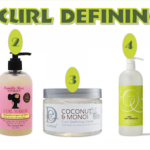
Black or blonde? Brunette or redhead? Hair is said to be a woman’s crowning glory and whether long or short, with the right shade, it further enhances the face.
Before you snap fingers and say you’d get a new hair color, understand first that hair dyeing can be a tricky form of beauty art. Whether DIY or professionally done, there are things to understand about hair and changing its color.
Some facts to remember…
- A badly done color job can cause hair to dry out but not necessarily cause hair loss. The hair becomes brittle and easy to break, and thus falls, which can often be mistaken for hair loss.
- Hair thinning may result from some reactions to certain dye chemicals, but it is best for you to determine if it’s not a medical condition that’s really causing it.
- Hair dyes, along with other chemical contents, have been linked to the development of cancer. However, there are no scientific evidences that can prove hair dyeing to be the culprit as we are all exposed to too many risks.
- Some people may be allergic to substances in a hair dye that may cause some skin rashes, so it is best to do an allergy test before a color job.
How does hair dye work?
Hair strands are covered in cuticle; the first layer that serves as protection. In order for a dye to do its job effectively, that cuticle has to be “lifted” and this is done by an ingredient called ammonia. It separates the cuticle by raising the hair’s pH, allowing the color to penetrate the cortex, the second layer in a hair strand.
Hair dyeing can dry the hair out because of another ingredient called peroxide, but is a necessary component to destroy the hair’s current color. With the cuticle lifted and the current color broken down, the dye color can then begin to develop into the strands. However, lifting the cuticle and the exposure to peroxide may cause some damage.













